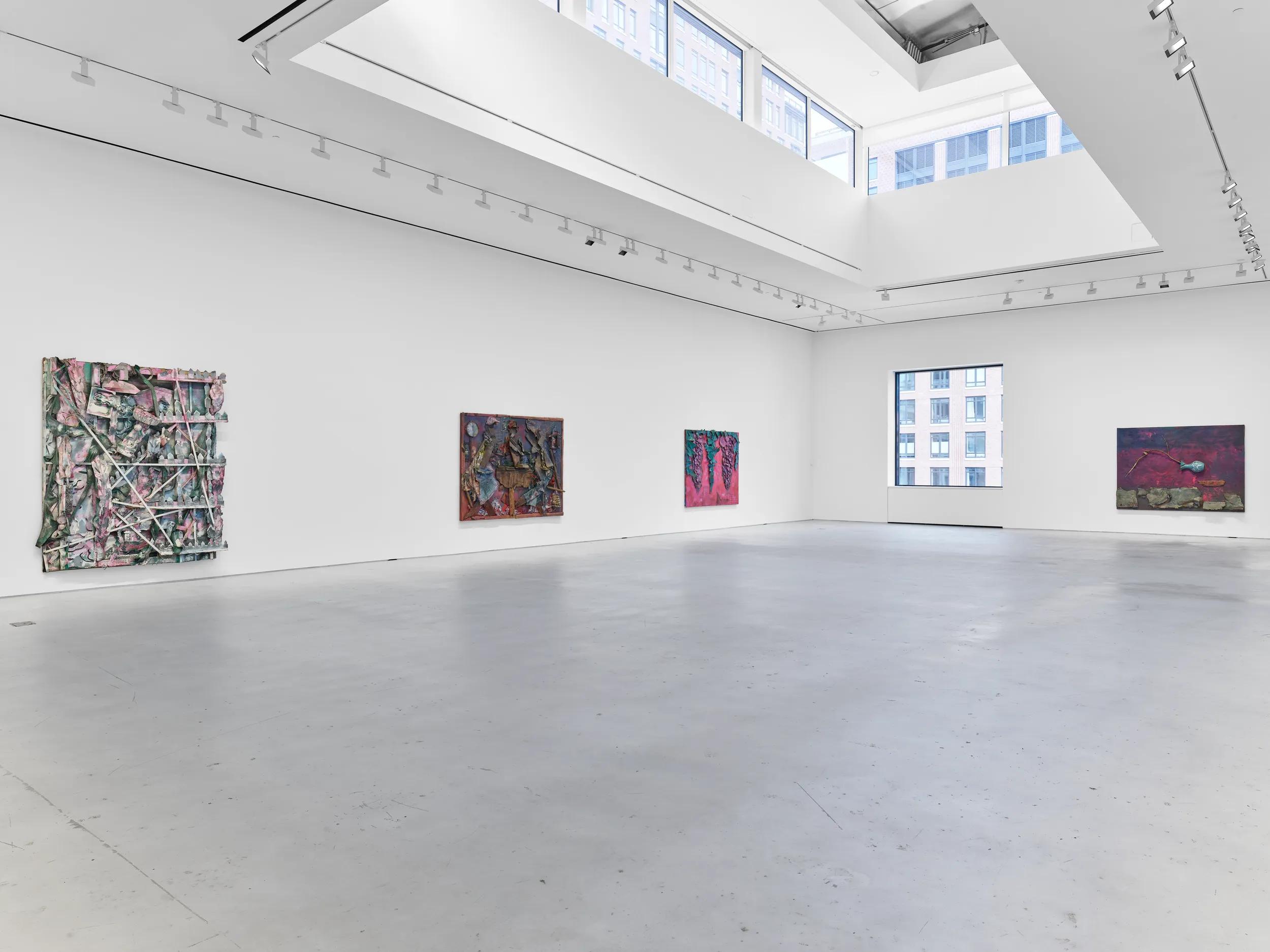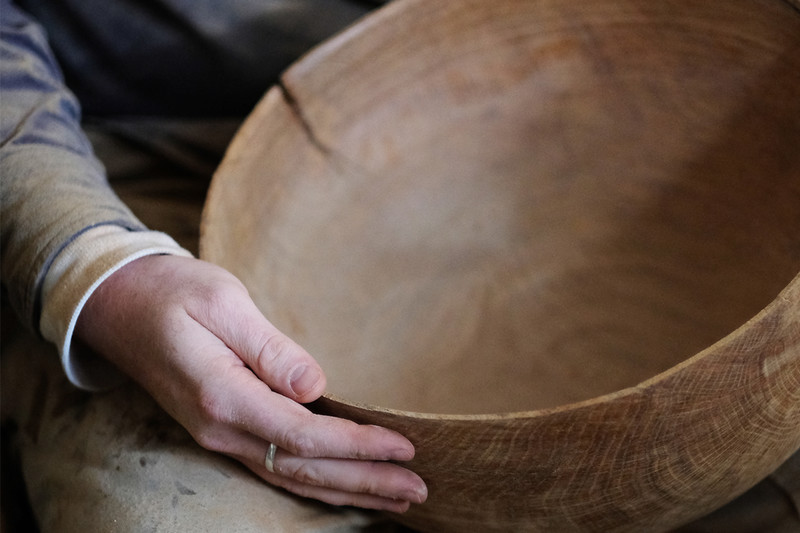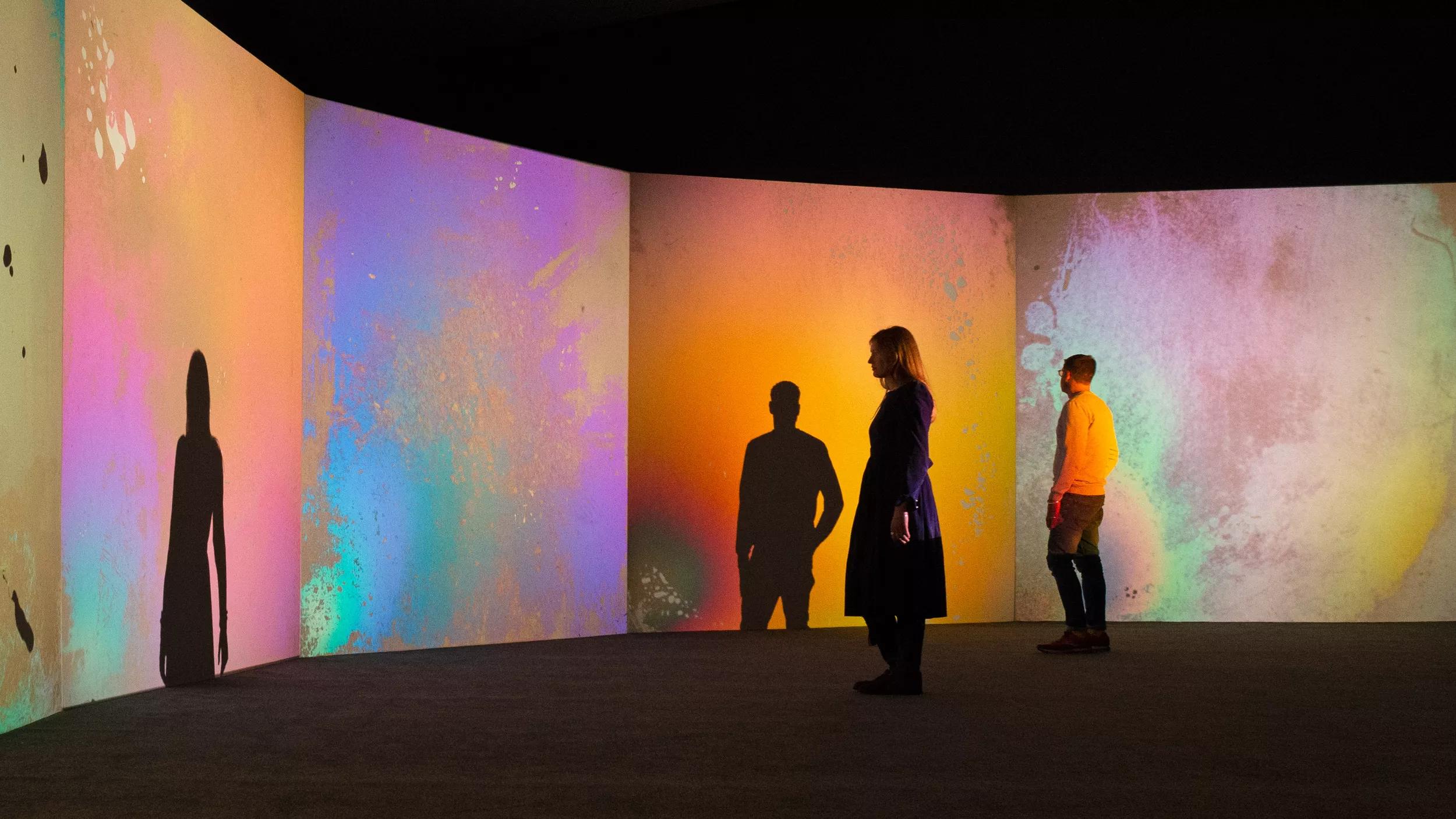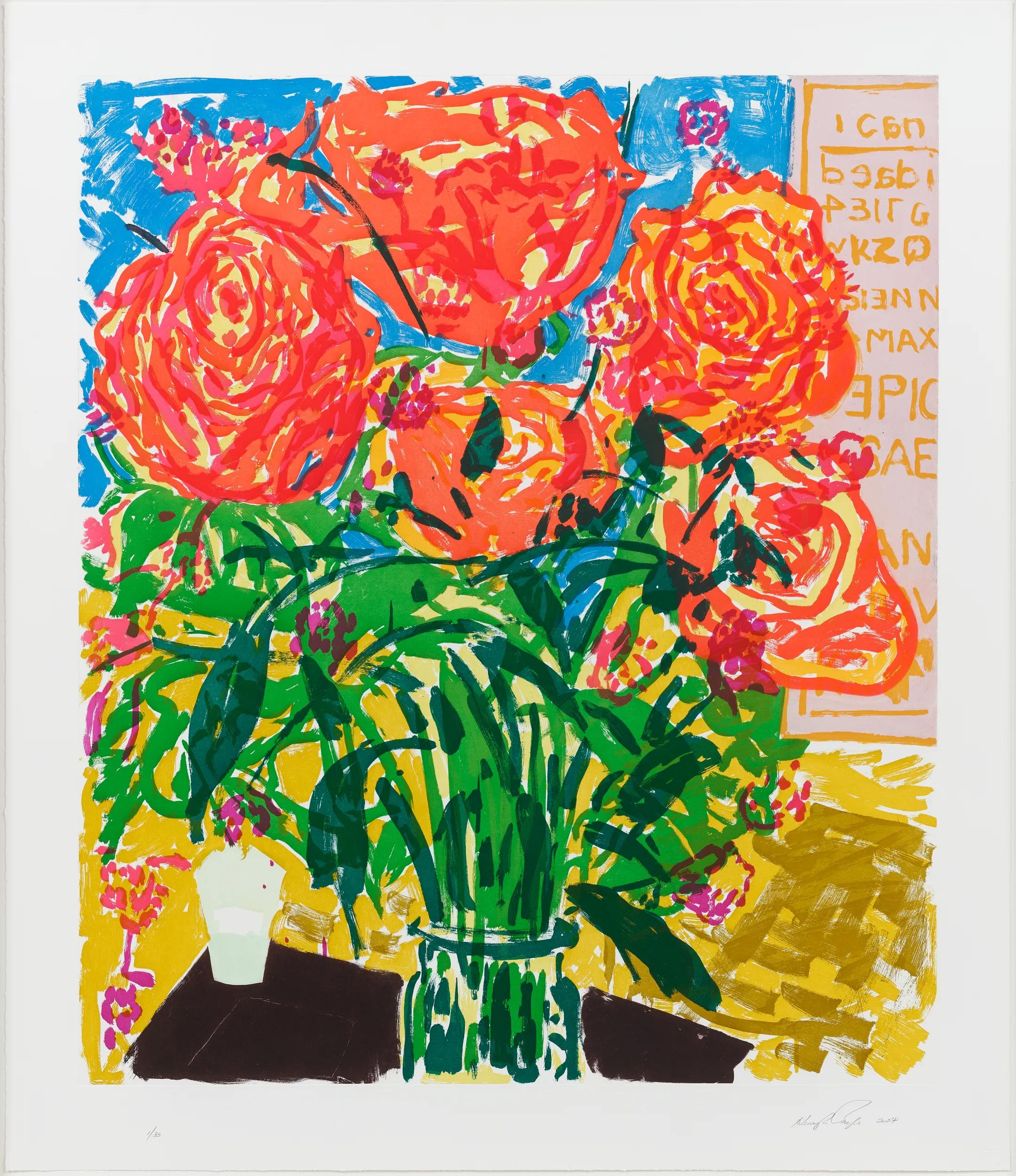
Levelling Traditions
1 Dec - 2 Feb 2019
Opens on Friday 30 November 2018, 6 – 8 pm
Make, Somerset
About
Make’s second exhibition entitled ‘Levelling Traditions’ brings together nine artist-makers united by an intimate understanding of material. Each was invited to create original works to interpret themes of rural life and traditions, the land, the domestic and the intimate – a world in which materials, people, place and process have been so closely intertwined.
The exhibition attests to the extraordinary skill of the maker and modern craftsmanship and our rich cultural heritage. Many works have been created using materials from the makers’ local environment or sourced specifically from Somerset.
Cameron Short & Janet Tristram | Bonfield Block-Printers
The work of Bonfield Block-Printers is rooted in a love of the countryside - it’s rituals and folklore - and notions of a bygone rural life. Cameron Short and Janet Tristram have looked to the old folk songs of Somerset, famously collected by Cecil Sharp in 1903, for inspiration when creating the work for this show and the ‘Somerset Song Coat’.
The calico lining of each coat is emblazoned with hand carved block-printed images, based on the abundance of rich, strange imagery within the folk melodies. The ‘Song Coats’ are modelled on early 1900s men’s frock coats but Tristram has crafted these for women. The textile is a hand-dyed, high grade linen & wool blend.
In addition, oak framed block prints entitled ‘Songs of Somerset’ have been printed on ‘Somerset’ paper stock, sourced locally from St. Cuthbert’s Mill in Wells, including a large, framed limited edition print titled ‘Bruton Town’, named after one of the songs - the work depicts four block-printed images from the song.
Annemarie O’Sullivan | Basket Weaver
Annemarie O’Sullivan’s work draws on the sturdiness of agricultural baskets, the curves of the landscape, and a deep respect for ancient crafts. She is inspired by simple connections to basket-makers from the past.
O’Sullivan grows around twenty different types of willow – she is passionate about seeing the making process through from source material to finished piece. Employing weaving and binding techniques, which have been used for thousands of years, O’Sullivan creates small-scale domestic objects through to larger-scale architectural forms.
O’Sullivan’s latest work references traditional fishing baskets, traps, and lobster pots. She has drawn on this vibrant history to create a collection of objects which stand together with a sense of community, a tradition on the brink.
Abigail Booth | Textile Artist
Abigail Booth’s abstract textile works are rooted in the conceptual language and materiality of painting, with each piece being a meditation on the language of the drawn line, and the origin of pigment and colour. Evoking simplicity and minimalism in the quiet gesture and movement of the hand, her work seeks a connection to landscape through the reflective nature of colour and the relationship of people to the land.
In this body of work, she looks to the physical mark of man on the agricultural landscape of the South West as a way to connect the materiality of the place, with the psychological presence of those that work it. Working with ploughed earth, raw milk, chalk, and tannic acid sourced directly from surrounding cultivated landscapes, she saturates and daubs cloth with pigment, connecting her work to the agricultural identity of the place.
Max Bainbridge | Wood Sculptor
Max Bainbridge’s sculptural vessels take the natural form of the wood as a starting point. He uses woodturning, hand carving, and elemental processes to create objects that are reflective of the making process; each piece displaying the physical effort that goes into its conception through the marks left on the surface.
For this body of work, he has worked directly with the Hauser & Wirth Somerset estate to source two storm-felled trees; an aged Oak that had lain for decades on the woodland floor, and a large bough of Ash that had torn off a still standing tree. Working with wood sourced directly from the local landscape, this work forms a deep connection to place through the ritualistic relationships he builds between objects that share a common origin.
Lorna Singleton | Basket Weaver
The wood for this collection comes from an ancient oak coppiced in the South Lakes, Cumbria where Lorna Singleton has been nurturing a section of woodland for the last three years. Singleton harvests wood by hand including birch sap, bilberries, and oak stems, seeing the whole process through from woodland management to hand woven basket.
Honouring the generations of swillers before her, Singleton has used the skills and techniques of this critically endangered craft to develop pieces for this exhibition with a finer finish and more delicate weave, designed to be worn close to the body.
The belly-like form of many of these baskets are based on a traditional shape, designed to sit naturally against the hip and back. The collection consists of subtly different shapes, styles, and sizes and displays the natural colours of the oak and leather, which will develop a patina through regular use.
Mark Reddy | Wood Sculptor
Mark Reddy takes the modest, humble form of the spoon and imbues it with symbolic expression. Skilfully working with wood that is cut and foraged locally from native Somerset trees, Reddy utilises the innate character inherent in his materials. His spoons and vessels are carved from green wood using traditional tools: the hand axe, the maul, the froe, and the crook knife.
Universal and timeless, domestic and intimate, some argue that the spoon is man’s first vessel; a utensil providing comfort, nourishment, and a giver of life. Palaeolithic peoples used seashells connected to small wooden sticks, or chips of wood slowly carved into spoon-like shapes; to this day, for many cultures spoons are deeply symbolical, often associated with gift giving and ceremony.
In this collection, Reddy has used spalted beech, oak, maple, apple, cherry, and walnut woods. His spoons feature handles with live bark still intact, or are embellished and burnished with gold, a loop of hand woven reed or grass cordage. Reddy has adorned his objects with a Roman coin, a stone bead, carved and found objects. Each piece, with these tokens and amulets embodies a strange and intriguing narrative.
Nicola Tassie | Ceramicist
Nicola Tassie’s work traverses the boundaries of current ceramic practice, from the functional forms of traditional studio pottery to a more conceptual practice where the thrown object is reassigned to serve a more visual, narrative, or aesthetic role. In both there is a desire to develop the language of ceramics and engage in questioning its contemporary relevance. For this exhibition, Tassie has created three sets of functional ware – a set of tea cups and saucers, a group of cider jugs, and a lidded storage jar.
Inspired by Medieval English pottery, each of the cider jugs are named after a place where original ceramic examples have been found, connecting form to place. The strapping handles bow out, connecting rim to belly – an invitation to ‘handle’, for the arm to follow the arc and pour through throated spouts. The set of tea cups and saucers explores a more recent past of domestic ritual. A more complex action is involved in the relationship between cup and saucer - hands lifting, cradling, tipping, for the intimacy of touching lip to rim. The dimensions of the lidded storage jar are based on the width and length of the makers arm, its deep cavity reachable only with the feeling hand. In all of these works the act of display creates a precarious tension – a thwarted desire to touch. They hold a powerful emotional role in evoking memories of lost connections and desires.
Vestiges of the domestic objects are recognisable in the fourth piece on show – a new ceramic still life that seems more explicitly for viewing. It presents a profile of glazed objects, like a landscape to travel over, evoking a wider outlook.
Sebastian Cox | Furniture Maker
Sebastian Cox works with a deep respect for sustainable British woods and coppiced timber to craft unique furniture that both references tradition and looks to the future. His beautifully conceived, functional pieces have the inventiveness of the craftsman who has an instinctive understanding for both techniques and material.
Imagined for a modern rural home, Cox’s Sycamore and Lime settle, cabinet, and table, are new pieces of furniture that combine clean lines, simple forms, subtly tapers and deep texture. This body of work looks to English sycamore and lime; two materials, almost neutral in colour, with vastly different material properties, which are explored in each piece. The pale tone of these woods play with light and texture, creating objects designed to be at their most alluring when illuminated.
Sycamore is a strong and lightweight wood and makes beautiful, crisp joints and in each of the pieces provides a structural frame. Lime carves beautifully and allows us to express a rich, hand-hewn texture.
Installation views


Current Exhibitions

Firelei Báez
The Fact That It Amazes Me Does Not Mean I Relinquish It
13 September 2024 – 5 January 2025
Downtown Los Angeles

Thornton Dial - The Visible and the Invisible
2 November 2024 – 11 January 2025
New York, 22nd Street

Firelei Báez
The Fact That It Amazes Me Does Not Mean I Relinquish It
13 September 2024 – 5 January 2025
Downtown Los Angeles

Thornton Dial - The Visible and the Invisible
2 November 2024 – 11 January 2025
New York, 22nd Street
1 / 10














